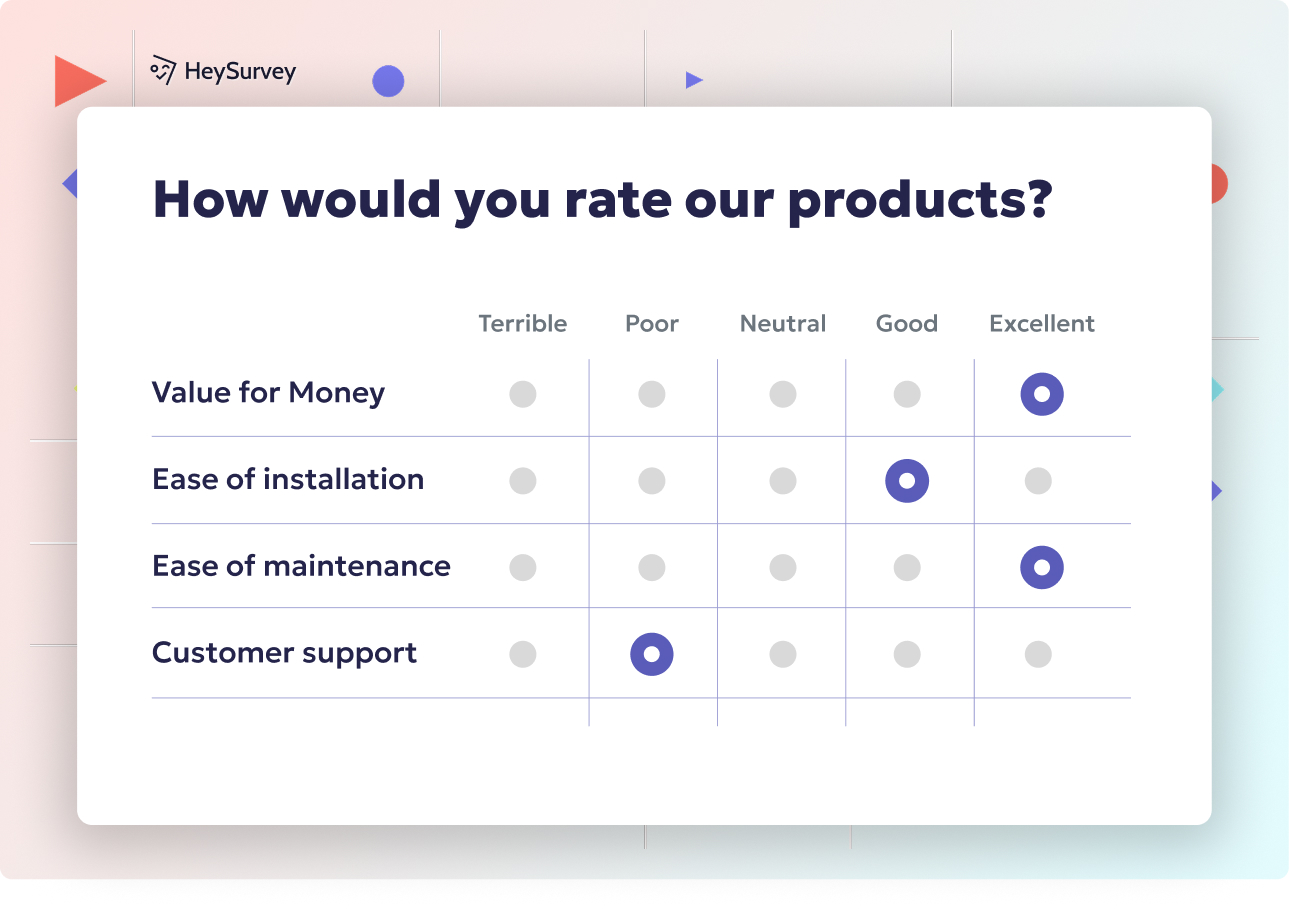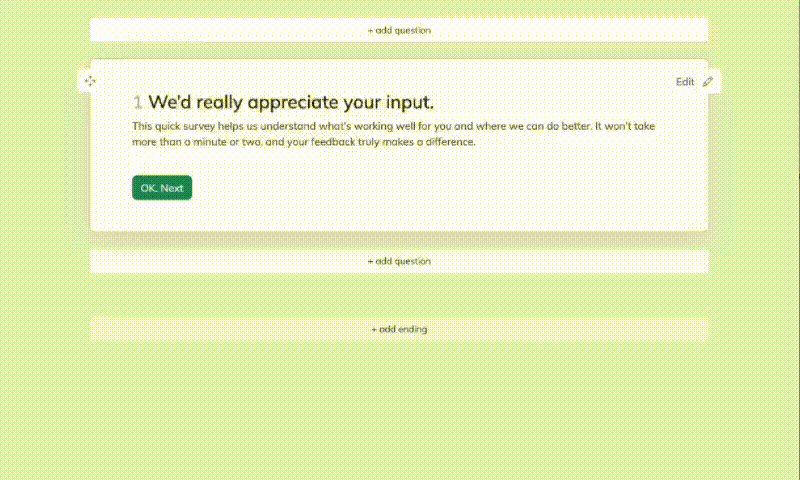32 UX Survey Questions to Improve Every User Experience
Discover how to craft effective UX survey questions with 40+ sample questions tailored to uncover user insights and improve your product experience.
User experience surveys are the secret sauce for modern product design. Crafting deliberate questions uncovers real-time feedback that guides every tweak, feature, or pivot. When UX surveys hit the mark, you glean rich insights on pain points, validate your hunches, and track how people actually feel about your digital baby. In this guide, you’ll see eight powerful types of surveys—each with details on when to use them, why they matter, and five copy-paste sample questions. At the end, you’ll find best practices for gathering honest answers and driving your next big UX win.
Post-Task Usability Survey
Why & When to Use
The post-task usability survey is the gold standard for catching authentic reactions. You deploy it right after users complete a task in a usability test—no waiting. Freshness is everything here! Gather insights while the experience is still vivid in users’ minds.
This survey works wonders for pinpointing micro-interaction pain, making it easier to measure perceived ease, speed, and satisfaction. It’s your go-to for seeing which tiny wrinkles frustrate users before they balloon into bigger problems. If a button’s label throws someone off, or an info message lands flat, you’ll know instantly.
Post-task surveys are also perfect for: - Unmoderated prototype tests where you need structured feedback without a facilitator. - Comparing multiple design flows in A/B tests side-by-side. - Tracking progress as your team iterates toward effortless user flows.
By using this survey, you guarantee targeted, actionable feedback at the step-by-step level, creating a robust foundation for fixing and finessing your product.
5 Sample Questions
On a scale of 1-7, how difficult was it to complete the task you just performed?
What, if anything, prevented you from finishing more quickly?
Which step felt most confusing and why?
How confident are you that your input was saved correctly?
If you could change one thing about this flow, what would it be?
Post-task usability surveys, administered immediately after task completion, effectively capture users' immediate reactions and identify specific interaction issues. (trymata.com)
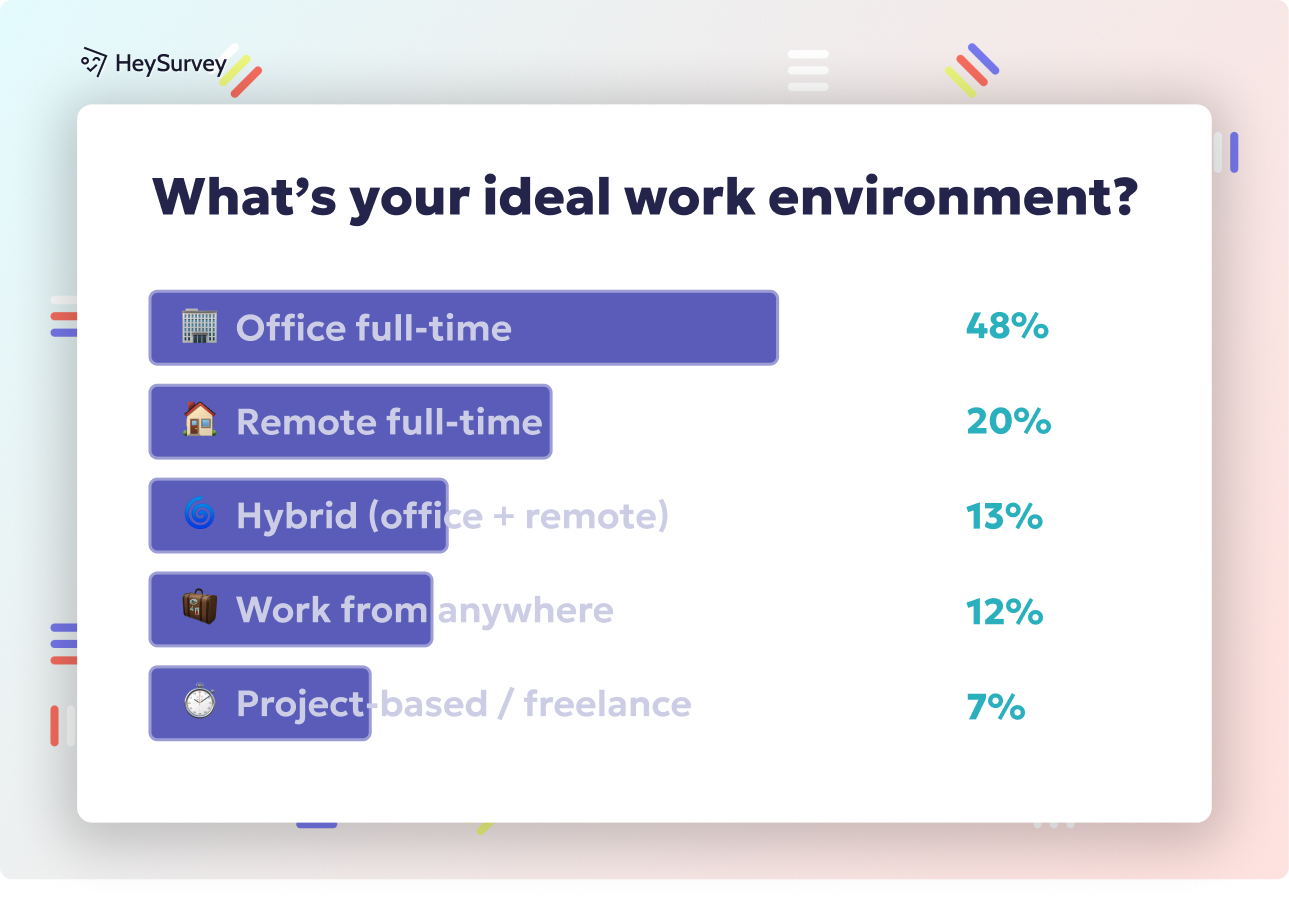
Creating your UX survey with HeySurvey is as easy as 1-2-3! Follow these simple steps and you’ll be gathering valuable user insights in no time.
Step 1: Create a New Survey
- Go to the HeySurvey homepage and click “Create Survey.”
- Choose to start from an empty sheet, pick a pre-built template, or use the text input creation method if you want to type your questions directly.
- Give your survey an internal name so you can easily find it later in the Dashboard.
Step 2: Add Questions
- In the Survey Editor, click “Add Question” at the top or in between existing questions.
- Select the question type that fits your needs — for example, scales, multiple choice, or open text.
- Enter your question text and customize details like required answers, descriptions, or images.
- Repeat until all your questions are added. You can reorder or duplicate questions for quick setup.
Step 3: Publish Your Survey
- Once happy with your survey, click “Preview” to see how it will look to respondents.
- Adjust colors, fonts, or layout from the Designer Sidebar to align with your style.
- When you’re ready, hit “Publish.” You’ll get a shareable link to send to your users.
- Note: Publishing requires creating a free HeySurvey account to access responses later.
Bonus Step 1: Apply Branding
- Upload your logo in the Designer Sidebar to add your company’s branding to the survey header.
- Customize colors and fonts so your survey perfectly matches your brand identity.
Bonus Step 2: Define Survey Settings
- Open the Settings Panel to set start/end dates for your survey availability.
- Limit the number of responses if needed or create a redirect URL for after survey completion.
- Decide whether respondents can view aggregated results once they finish.
Bonus Step 3: Create Survey Branches
- Use advanced question settings to add branching logic that tailors the question path based on responses.
- Set custom endings with unique messages or images depending on user answers for a personalized experience.
Want to jump right in? Click the button below to open a ready-made template and start customizing your UX survey now!
System Usability Scale (SUS) Survey
Why & When to Use
When your team needs to benchmark usability across versions or against competitors, pull out the legendary System Usability Scale (SUS). It’s a standardized 10-question battery that produces a single usability score—from “barely tolerable” to “delightfully intuitive.”
Use the SUS survey after meaningful product releases or big interface overhauls. It’s great for pitting your oldest UI against your shiny new redesign, or stacking your product’s user ease against others in your space.
SUS neatly sidesteps “feature creep” by focusing only on overall system usability. Your users answer the same questions every time, meaning you can spot improvements, regressions, or outright disasters as you make changes. Some organizations even run SUS twice a year to track their progress and signal urgent UX priorities.
If you want quantifiable, apples-to-apples usability data, SUS is your ticket to consistency and clarity.
5 Sample Questions
I think that I would like to use this system frequently.
I found the system unnecessarily complex.
I thought the system was easy to use.
I felt very confident using the system.
I needed to learn a lot of things before I could get going with this system.
The System Usability Scale (SUS) is a reliable and valid tool for measuring perceived usability across various systems, with an average score of 68 considered standard. (measuringu.com)
Net Promoter Score (NPS) for UX
Why & When to Use
If you want to measure long-term loyalty and buzz, nothing beats a well-timed Net Promoter Score (NPS) survey. NPS for UX zeroes in on whether users would recommend your product to others—a crystal-clear sign of love or loathing.
Run this survey quarterly or after rolling out major updates to watch sentiment zig and zag over time. Every NPS answer tells you how likely your users are to become cheerleaders—or critics. If your NPS is trending up, your UX is probably sizzling with goodness.
This survey format is also a winner for teasing out why people love (or hate) specific features. NPS can guide prioritization, highlight strengths, and even unearth hidden deal-breakers. If a certain feature is sinking your score, you’ll know soon enough.
Ultimately, the NPS survey is your compass for user emotion, loyalty, and the overall health of your UX.
5 Sample Questions
On a scale of 0-10, how likely are you to recommend our product to a friend or colleague?
What is the primary reason for your score?
Which feature influenced your score the most?
How could we improve your experience enough to raise your score?
Compared to similar products, how does ours stack up in usability?
Product-Market Fit (PMF) Survey
Why & When to Use
The product-market fit (PMF) survey is your ultimate gut-check for demand. It asks whether users would miss your product if it vanished tomorrow—a brutal but vital question. Use it when your product is new or just before rolling out massive features.
This survey’s strength is in surfacing real must-haves and exposing if you’ve built a vitamin (nice-to-have) instead of a painkiller (indispensable). You’ll discover exactly who loves your product, why they stick around, and what makes it their daily go-to.
PMF surveys are a must for startups, teams running closed betas, or whenever you’re deciding whether to double down or pivot. They tell you: Is your product solving a burning problem for the target users, or is it just “well, kinda nice”?
Use a PMF survey to get laser clarity on market value, prioritize future work, and focus your team’s energy where it really matters.
5 Sample Questions
How would you feel if you could no longer use this product?
Which type of user do you think most benefits from this product?
What is the main value you receive from using it?
What’s the biggest challenge our product helps you overcome?
What could we change to make the product indispensable to you?
Research indicates that achieving a Product-Market Fit (PMF) score of at least 40%—where users would be "very disappointed" if they could no longer use the product—is a strong indicator of market fit. (measuringu.com)
Customer Journey Satisfaction Survey
Why & When to Use
Ready to tackle the entire customer adventure from first click to final support ticket? The customer journey satisfaction survey paints a panoramic picture of your user’s experience. Deploy it after mapping out your user journey, or as you launch omnichannel touchpoints—like adding a new app or support hub.
Rather than hone in on just one moment, this survey spans every key stage of the journey. You’ll pinpoint where users stumble, what makes them smile, and where your process could be frictionless instead of frustrating.
Key moments for this survey include: - Fresh-feature rollouts where the customer might bounce between devices. - New support channels or big onboarding overhauls. - Awareness campaigns that drive sign-ups or first-time purchases.
A customer journey satisfaction survey is your ticket to big-picture insights, helping uncover weak links and highlight delightful stretches in your product’s end-to-end experience.
5 Sample Questions
How satisfied were you with the information you found before signing up?
Rate the ease of moving from mobile to desktop without losing progress.
At which stage did you experience the most friction?
How well did our support resources help you resolve issues?
What would make your entire journey smoother?
Feature Prioritization Survey
Why & When to Use
A feature prioritization survey is every product manager’s best friend for dodging feature bloat and pushing forward what truly matters. Use this one when you’re planning your roadmap, looking for killer features, or trying to avoid wasted dev hours.
This survey digs into which upcoming additions deliver the most bang for your users’ buck. You’ll know which features are “can’t live without,” which save time, and which make people go, “Why would I ever use that?”—all straight from your end users’ mouths.
Deploy these surveys right before quarterly planning, as you gather requirements for a new sprint, or even after you preview concepts to your customer advisory board. The answers often surprise teams and steer away from building for the loudest voice in the room instead of your actual core users.
By running a feature prioritization survey, you ensure that your team is building value—not just features.
5 Sample Questions
Rank these upcoming features in order of importance to you.
Which feature would save you the most time daily?
Are there any features you would never use? Why?
How disappointed would you be if we did NOT build [Feature X]?
What’s a feature you wish our competitors offered that we should consider?
Onboarding Experience Survey
Why & When to Use
Getting onboarding right is like rolling out the welcome mat for new users. The onboarding experience survey checks whether first-time users are confident, clear, and grinning with delight right from the start. It’s best sent after Day 1, at the end of Week 1, or immediately after users finish your product walkthrough or tutorial.
The magic of this survey is in revealing if users “get it”—or if they get lost in jargon, confusing steps, or slow value delivery. Every hiccup at onboarding increases the risk of users heading for the exit. But when you listen to new users, you see which tweaks could spark “aha!” moments faster.
Perfect times to run this survey include: - After major sign-up flow reworks. - When moving to no-code onboarding. - After big increases in user sign-ups—to keep retention rising.
Tapping into fresh first impressions gives you quick wins and helps make your product irresistibly sticky from day one.
5 Sample Questions
How clear were the steps required to get started?
Which part of the onboarding took longer than expected?
Did you encounter any terminology you didn’t understand?
At what point did you first experience value from the product?
What could make the onboarding process feel effortless?
Post-Release Sentiment Survey
Why & When to Use
A post-release sentiment survey is the UX Fourth of July—watching sparks fly after every launch, redesign, or big update. This survey goes out within 24–72 hours of the change, ensuring you hear unfiltered opinions while reactions are at their spiciest.
Its power lies in assessing first impressions: did the update make life better, worse, or just…different? Users will tell you which tweaks broke their favorite shortcuts, what new delights made their workflow fly, and what confused them enough to consider switching.
Standard times for this survey include: - Immediately post-launch of a new feature or version. - After redesigns that shake up navigation or core flows. - Following the roll-out of anything users rely on daily.
Tuning in to real-time user sentiment keeps you from wandering too far off the path—and lets you adjust or roll back features before frustration festers.
5 Sample Questions
How satisfied are you with the recent update?
Did the new design improve or worsen your workflow?
Were any functions you rely on harder to find?
What do you like most about the latest changes?
What is one thing we should roll back or revise?
Best Practices: Dos & Don’ts for High-Impact UX Surveys
Getting UX surveys right isn’t just about the questions—it’s the setup, delivery, and follow-through that matter. The king of good survey design is timing: send questions while an experience is fresh, not after memories fade.
Your question wording should be crystal clear and genuine: - Avoid jargon or industry slang. - Be specific about actions or features for accurate recall. - Stay neutral; don’t nudge! Never mix two questions into one.
Survey length can make or break your response rate. Short surveys (5–10 questions) get more love and truth.
Mix it up! Combine closed-ended questions (ratings, yes/no, multiple choice) for quick scores, and open-ended prompts for juicy detail. This combo gives you both numbers to track and stories to explain what users feel.
Be kind to your users: - Avoid sneaky incentives that tilt your sample toward prize-seekers. - Recruit a mix of long-time and first-time users for a 360-degree view. - Test your survey before launch—catch typos, logic skips, and accessibility gaps.
Respect privacy: - Don’t collect unnecessary data. - Make sure survey tools are accessible so everyone can participate. - Give users a way to skip questions without penalty.
Once answers roll in, the fun isn’t over. Analyze the results, highlight the “aha” moments for stakeholders, and build a loop that turns survey feedback into your next round of design magic. Well-crafted UX surveys mean you’re not just guessing—you’re designing what your users truly want.
In summary, creating the right UX survey questions unlocks deep, actionable insights that drive design success. By choosing the best survey for each user-experience goal, you build products people genuinely love. Keep testing, keep listening, and your UX will shine.
Related UX Survey Surveys

32 Software User Experience Survey Questions: The Complete Guide
Discover 28 expert software user experience survey questions with templates to collect user feedb...
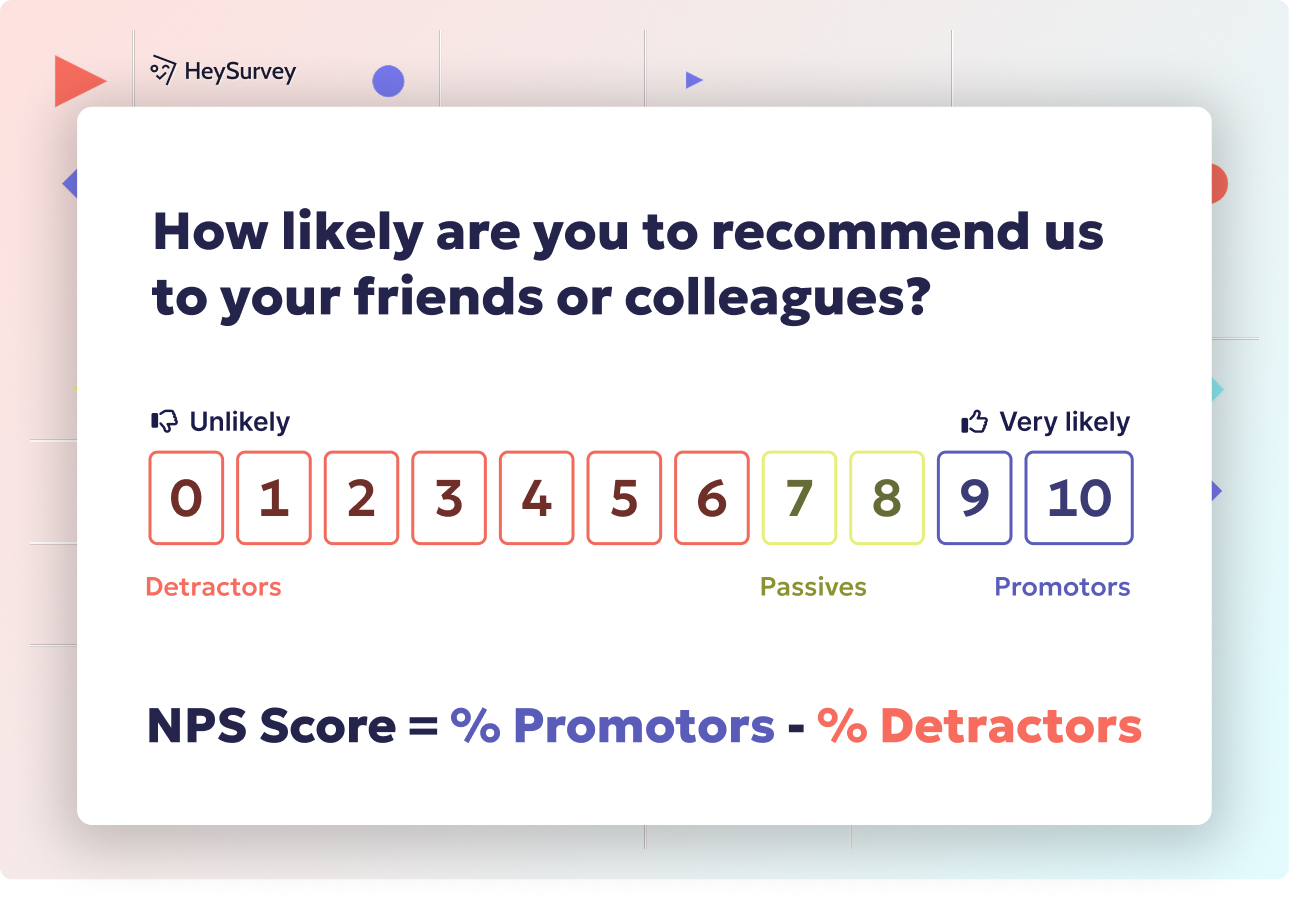
30 UX Survey Questions Example: Types, Use-Cases & Samples
Discover 30+ UX survey questions example with best-in-class samples, types, and use cases to opti...
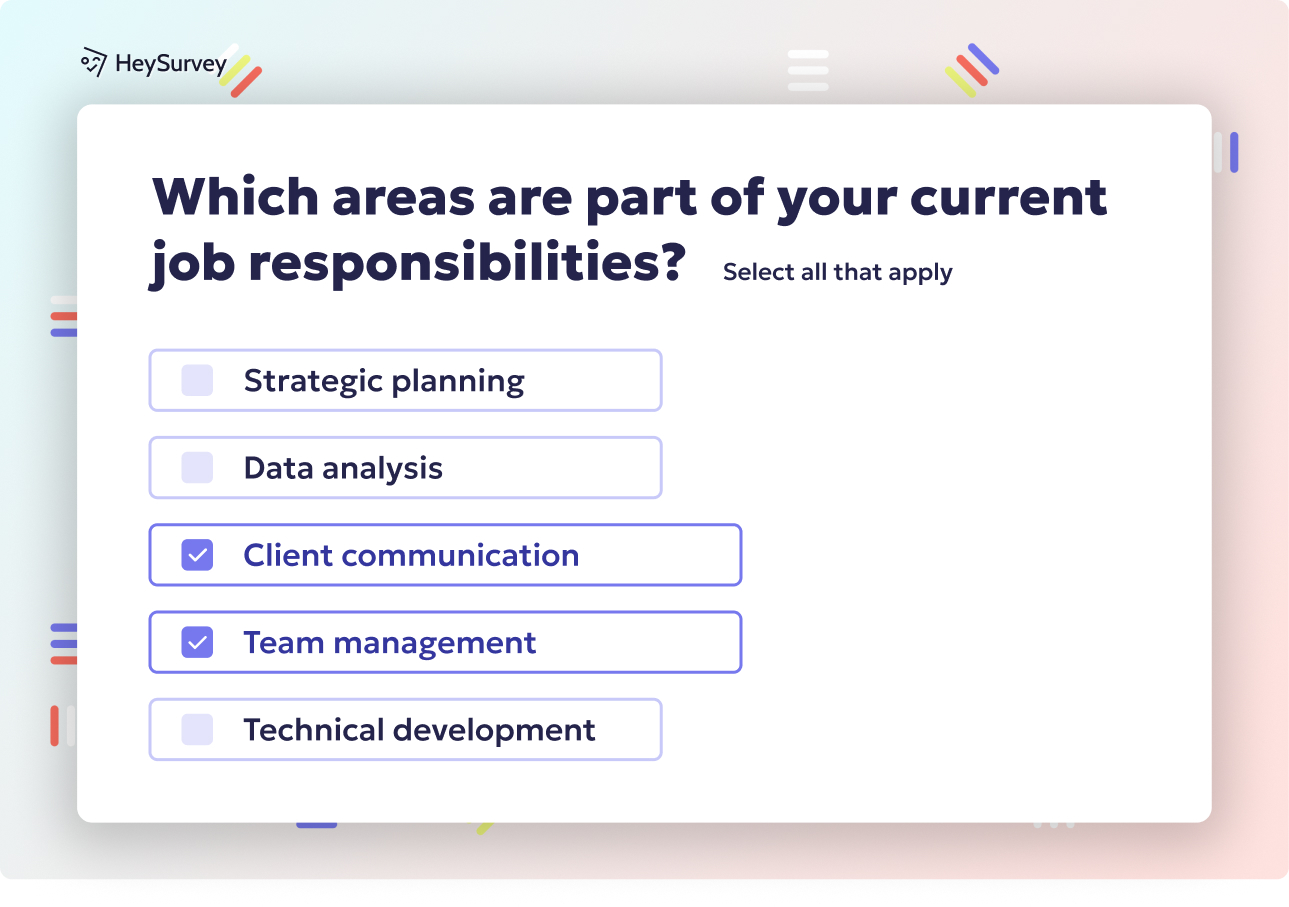
32 Website Redesign Survey Questions to Guide Your Success
Explore 40 website redesign survey questions with expert tips to gather real user insights and al...
